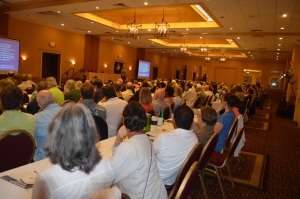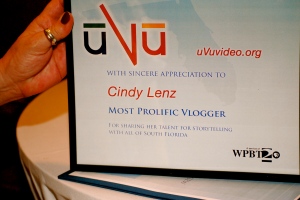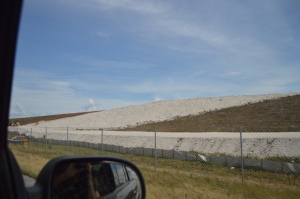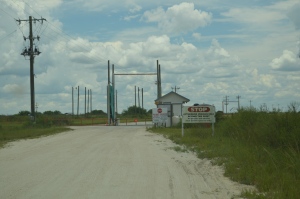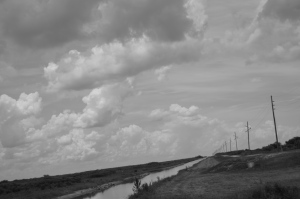Remember when Michael Grunwald was here and he said “Big Sugar has a right to be in business” and everyone groaned. Well, that’s true. They do. What I don’t think they have the right to get subsidies to stay alive when the rest of the businesses have to put themselves out there and if they succeed they succeed and if they don’t they don’t.
The same thing goes for Pacific Legal Foundation. Conservatives you can’t have it both ways. You either believe in state and local rights or your being a hypocrite. I’m beginning to think more and more every day its the latter. These people tell you one thing and they do another. In other words your being duped. If you want to believe something believe it but don’t be duplicitous.
Yesterday, I wrote this blogpost about how Pacific Legal Foundation is the common denominator with issues with our Florida Panthers, Florida Black Bears and Manatees. They were also on Lawsuit for the Chesapeake Bay.
https://cyndi-lenz.com/2015/07/09/panthers-manatees-and-bears-oh-my/
You can check them out here.
This is the libertarian’s party environmental platform.
“We support a clean and healthy environment and sensible use of our natural resources. Private landowners and conservation groups have a vested interest in maintaining natural resources. Pollution and misuse of resources cause damage to our ecosystem. Governments, unlike private businesses, are unaccountable for such damage done to our environment and have a terrible track record when it comes to environmental protection. Protecting the environment requires a clear definition and enforcement of individual rights in resources like land, water, air, and wildlife. Free markets and property rights stimulate the technological innovations and behavioral changes required to protect our environment and ecosystems. We realize that our planet’s climate is constantly changing, but environmental advocates and social pressure are the most effective means of changing public behavior.”
Let me repeat “environmental advocates and social pressure are the most effective means of changing public behavior.”
(P.S. It looks like they believe in climate change)
So it’s hypercritical for the Pacific Legal Foundation to mess with the free will of our Florida Black Bears.
That’s my logical conclusion.
Duplicitous
So is the Pacific Legal Foundation a libertarian foundation. I don’t think so.
I think they are a Koch Brothers, Scaife Foundation lackeys hiding out in bosom of an unending cash cow and really sticking their nose where it doesn’t belong but where their masters want them to go.
Not free thinking at all. Not what I would expect from Libertarians.
It’s this behavoir, this intrusion into our Legislature this past year that I think made our head’s spin.
Who is the Pacific Legal Foundation and why are our Panthers, Manatees and Bears their Business?
Or anything else for that matter.
Just as a reminder we live in a democracy and we vote these people in to represent us.
About a month ago there was an issue up in Brevard, incited by some behind the scene bs getting all down on Thad Altman for being ok with the purchase of the land to send the water south and not dealing with his section of the Indian River Lagoon.
You can’t have it both ways. Pick a way and do that.
But what we ALL can’t have is people from other places making rules for us. If you want to be an elected official you talk to us your constituents not to the Pacific Legal Foundation or Citizens United. You work for us. If you work for them then give up your office and work for them. Can’t have it.
Other bloggers, writers in other states – we all need to compare notes. I guarantee the same thing is happening everywhere and one day we’re going to wake up and say “What happened?” (as we float down to Miami in our Kayaks.)
We all got upset when Pam Bondi signed on to a lawsuit for the polluters in the case of Chesapeake Bay. Most of us felt that Florida had no business being involved and using our tax money on a case not in our state when her job is to work for Florida. Pam Bondi! You work for us!
What we witnessed this past year was Rick Scott and the Florida Legislature making Florida their own personal slush fund at the expense of all of us. The Tea Party was given verbiage to incite them like “Land Grabs” and they went out like the sheeples they deplore and worked tirelessly for the 1%. Tea Party you have been duped. Brainwashed. You are not free. You are slaves for the Koch Brothers.
http://www.sourcewatch.org/index.php/Pacific_Legal_Foundation
The Pacific Legal Foundation is a Sacramento, California-based legal organization that was established March 5, 1973 [1] to support pro-business causes. In recent years, it has taken a lead in pursuing anti-affirmative action policies.
It is the key right-wing public interest litigation firm in a network of similar organizations funded initially by Scaife Foundations money across the USA to support capitalism and oppose environmental and health activism and government regulation.
The organization has been partially funded by a range of corporations and conservative foundations, including by the Koch family Claude R. Lambe Foundation in 1998.
The Koch brothers — David and Charles — are the right-wing billionaire co-owners of Koch Industries. As two of the richest people in the world, they are key funders of the right-wing infrastructure, including the American Legislative Exchange Council (ALEC) and the State Policy Network (SPN). In SourceWatch, key articles on the Kochs include: Koch Brothers, Koch Industries, Americans for Prosperity, American Encore, and Freedom Partners.
These people don’t believe in freedom they believe in pushing their own agenda that call conservative and they have their own Tea Party out their representing them.
Florida is not the Koch Brothers private playground.
And they may be treading into waters other people would not want you to go. After all, one of the reasons given not to buy the land was because of endangered birds that were there. You effectively would take that away from SFWMD and Big sugar and I don’t think they would be too happy about that.
“Tobacco Industry associations
PLF is listed as a “key third party ally” in a September 14, 1999 Philip Morris document.[6]
In 1989, Philip Morris began funding the organization through its Mission Viejo (gated-community land-development company) subsidiary, mainly because the organisation was active in the property rights area and had won cases limiting the States’ ability to expropriate or regulate private property. The Mission Viejo subsidiary was interested in fighting a no-growth initiative which had been blocking some of their development projects. At this stage Philip Morris only gave an annual grant of $5,000 each year, just to keep the organisation on side and available, but it may have also funded specific legal projects.
By 1991 the PLF had a major budget crisis. It was in deficit to the tune of about $1 million, which was about a quarter of its $4 million annual requirements. Not long after, Roy Marden, the Philip Morris executive in charge of maintaining relations with the right-wing think tanks and advocacy institutes, joined the PLF board. Overnight the funding increased substantially to $10,000, and then $22,000 by 1993. Philip Morris also began to utilize the PLF to undertake hidden media and political activities on its behalf.
For instance, it enlisted the organization (together with think-tanks like the Reason Foundation, Hoover Institute, Heritage Foundation and Claremont Institute) to write op-ed pieces that were planted in newspapers attacking the Environmental Protection Agency (EPA) over its determination that Environmental Tobacco Smoke (ETS) was a carcinogen and its attempt to regulate Indoor Air Quality (IAQ). (See page 4 of this planning document.[7])
At this time Philip Morris was also heavily funded two of PLF’s unacknowledged offspring, the National Legal Center for the Public Interest and the Atlantic Legal Foundation. The Washington Legal Foundation was another of a similar kind favoured and funded ($200,000) by Philip Morris, but it was independent of the Scaife-funded, PLF-based network. [8]
The PLF also intervened successful in Keller v. California State Bar, where it established a legal precedent that California lawyers could challenge the use of their dues to the state bar for political purposes. This was an successful attempt to block collective actions by the more liberal Californian lawyers who were involving themselves in such policy areas as class-actions and product liability.
By the mid 1990s the PLF had offices in Sacramento, Anchorage and Seattle and ran several key issues and programs:
- Judicial Responsibility Project
- College of Public Interest Law
- Limited Government Project
It also sloughed off the Center for Applied Jurisprudence which focused on commercial “free speech issues” (i.e., the right to advertise harmful products) and “regulatory reform.” Philip Morris was giving them a $25,000 retainer by this time (and presumably paying also for work done on their behalf).
In 1997-1998 the PLF joined forces with the $10 million funded (by Philip Morris) National Smokers Alliance, in a fierce and vindictive legal attack on Professor Stanton Arnold Glantz, a leader of California’s main anti-smoking organization, Americans for Nonsmokers Rights[9] and attempted to brand him in the public mind as having something to hide … a destroyer of legal document (a ruse the tobacco industry used itself on a massive scale). Glantz had received documents from the early tobacco industry whistleblowers, and he had established the first public-access Internet web site revealing how the industry operated.
Anti-Environment Policies
According to ExxonSecrets.org, the Pacific Legal Foundation has received $110,000 from ExxonMobil since 1998. The website goes on to state that:
Anti-environmental from the start, PLF’s early actions supported the use of DDT, the use of herbicides in national forests, and the use of public range land without requiring an environmental impact review. They also supported at least six pro-nuclear power cases before the early eighties while accepting funding from Pacific General Electric (PGE), a utility which has gained a great deal through the development of nuclear power in the Pacific Northwest. In the 1980s, PLF won several cases that are considered landmarks by those working on property rights issues today: Nollan v the California Coastal Commission and First Church, both Supreme Court victories which provide precedence for the takings litigation pursued today (Oliver Houck, “With Charity For All,” Yale Law Journal, 1993). In October 2003, PLF Vice President M. David Stirling had an Op-Ed published in which he defended President Bush’s environmental record and condemned former President Clinton for endorsing the Kyoto Protocol.”
Yikes!
Their the merchants of death! DDT for everyone. You get DDT and you get DDT!
SO Pacific Legal Foundation if you want to help people and their freedom please do so but please stop trampling on us. Florida is not up for grabs. We don’t care what Rick tells you. It’s just not true.
Rick Scott and his love affair with Pacific Legal Foundation!
http://blog.pacificlegal.org/plf-and-the-crafted-keg-work-together-and-free-the-growler/
Today Pacific Legal Foundation and The Crafted Keg received long-awaited news:
Governor Rick Scott signed the bill freeing the 64 ounce beer growler in the State of Florida!
For years, Florida law prohibited craft beer brewers and sellers from offering their beverage in the standard-size container used throughout the country.
http://www.modernhealthcare.com/article/20150417/NEWS/150419897
Florida Gov. Rick Scott plans to sue the CMS, accusing the agency of unconstitutionally trying to force the state to expand Medicaid by ending funding that now helps Florida hospitals pay for uncompensated care for low-income and uninsured patients.
But Todd Gaziano, a senior fellow in constitutional law with the conservative Pacific Legal Foundation, said the Florida situation presents the same legal issue as the one in NFIB. Still, he said, the argument of unconstitutional coercion in the Florida case, is “far from a slam dunk.” The Pacific Legal Foundation filed a separate lawsuit challenging the ACA.
“It’s the kind of claim that should not be dismissed at the outset,” Gaziano said. “It’s a claim that presents a reasonable legal argument.” But he conceded that the claim is not as clear, even if the government’s object is the same: to apply pressure on the state to expand Medicaid eligibility.
Sad but true Folks.
Sad but true.




